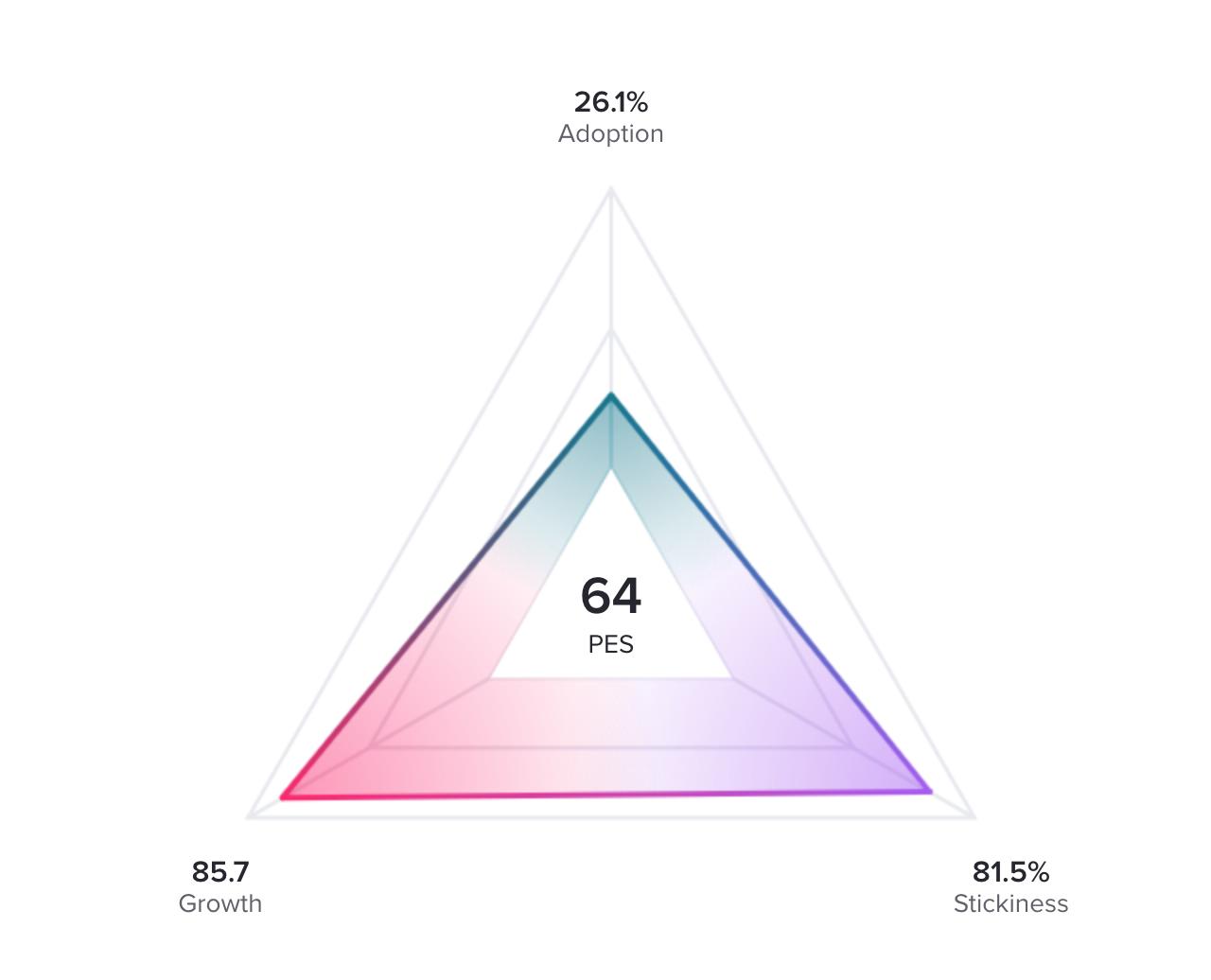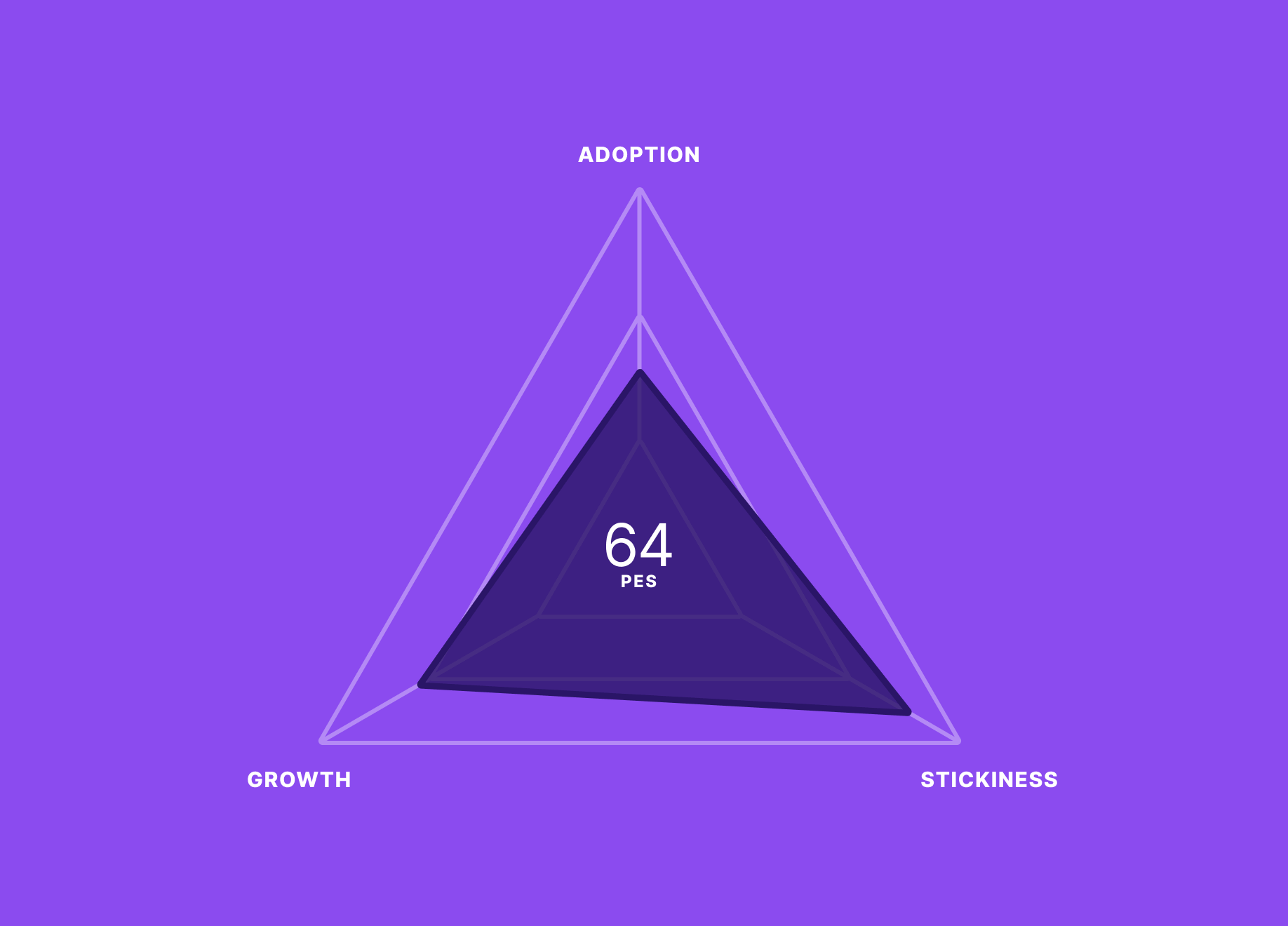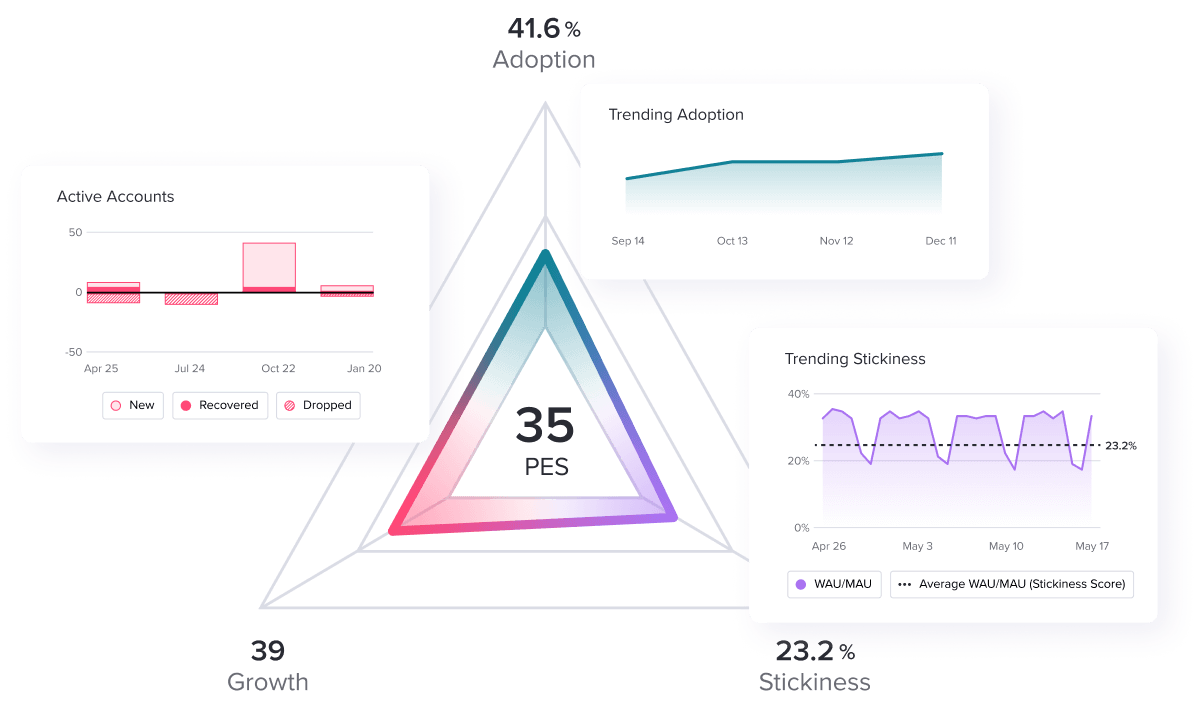Table of Contents
What is the product engagement score?
The product engagement score (PES) is a metric that provides a singular view into how users are interacting with your product. It is a composite score, made up of three elements:
- Adoption: The average number of Core Events adopted across all active Visitors or Accounts
- Stickiness: The average of the percentage of weekly active users who return daily (DAU/WAU), or the percentage of monthly active users who return daily (DAU/MAU) or weekly (WAU/MAU)
- Growth: The sum of new and recovered Accounts or Visitors divided by dropped Accounts or Visitors (also known as the Quick Ratio)
Since there are so many different product metrics (and ways to calculate them), measuring product engagement hasn’t historically been as straightforward as, say, measuring sentiment with NPS. The product engagement score aims to solve this challenge by giving product managers (PMs) an easy way to quickly diagnose how a product is performing.
How do you calculate a product engagement score?
Once you’ve calculated adoption, stickiness, and growth using the parameters above, calculating PES is simple. To get your product engagement score, take the average of those three numbers, expressed mathematically as:
(Adoption + Stickiness + Growth) / 3

Why is it important to track product engagement?
As our dependence on technology increases, users expect near-perfect experiences from the products they rely on in their personal and professional lives. If you’re not providing value and keeping customers engaged with your product, low switching costs make it easy for them to abandon it and find an alternative. So, PMs need to diligently track how customers are engaging, and then work to continuously improve their experience with the product over time.
While the product engagement score isn’t the only way to measure product engagement, one of its biggest benefits is that it allows you to dig into the why. If your PES is lower than usual, you can look at the three metrics individually to better understand what’s bringing down the average. When you combine this insight with customer feedback and in-app messages to guide users to the most valuable features, measuring product engagement becomes a continuous cycle of analyzing usage, iterating, and improving users’ experience over time.
How can I improve my product engagement score?
Beyond the obvious notion of improving your adoption, stickiness, and growth metrics individually, there are certain ways to boost your overall PES, too. Here are three tactics we recommend:
1. Identify high-value features: Dig into your product data to better understand which features represent your Core Events, as well as where and when your users (and different segments of users) are interacting with them. From there, you can leverage in-app messages to guide customers to these core areas, ensuring they see the more valuable parts of your product.
2. Make your product part of your users’ workflow: Spend time learning about your users, their needs, and how they navigate your application using both quantitative and qualitative data. The goal is to drive more frequent usage by pointing out areas of your product that can help solve their problems, so that your product becomes essential to their success.
3. Invest in onboarding: Onboarding is an important opportunity to ensure users get acquainted with (and see the value of) your product right away. An in-app onboarding strategy is useful in providing training and resources within the product itself, allowing you to educate users on features and functionality while they’re accessing them.
Where can I learn more about product engagement?
If you want to dig deeper into product engagement, Pendo has published a variety of resources on the topic. In this interactive quiz, answer a series of questions about your product and get a curated toolkit of resources to help optimize product engagement. To learn more about what product engagement is, why you should be measuring it, and how to do it, check out this hub of resources, articles, and webinars.
You might also like




